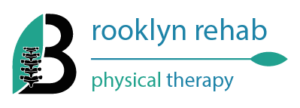Pediatric Physical Therapy: Helping Children Reach Their Full Potential
Learn about pediatric physical therapy and how it can help children with various physical disabilities and developmental delays reach their full potential. This article covers the benefits, techniques, and FAQs related to pediatric physical therapy.

Introduction:
Pediatric physical therapy is a specialized form of physical therapy that focuses on treating children with physical disabilities and developmental delays. It is a critical part of helping children reach their full potential, both physically and emotionally. Pediatric physical therapists use a variety of techniques to help children with various conditions, such as cerebral palsy, Down syndrome, and spina bifida, improve their strength, balance, coordination, and mobility.
In this article, we will explore the benefits of pediatric physical therapy, the techniques used by pediatric physical therapists, and answer some frequently asked questions about this type of therapy.
Benefits of Pediatric Physical Therapy:
Improves mobility: Pediatric physical therapy helps children improve their mobility and independence, allowing them to move and function more effectively in their environment.
Enhances strength and endurance: Physical therapists work with children to improve their muscle strength and endurance, which is crucial for daily activities such as standing, walking, and playing.
Promotes flexibility: Pediatric physical therapy can help children improve their flexibility and range of motion, allowing them to move more freely and with less pain.
Enhances balance and coordination: Physical therapy can help children with balance and coordination issues, which can make it difficult for them to perform daily activities such as walking and playing sports.
Reduces pain and discomfort: Physical therapists use techniques such as massage, heat therapy, and stretching to reduce pain and discomfort associated with physical disabilities and injuries.
Techniques Used in Pediatric Physical Therapy:
Exercise: Physical therapists use exercises to help children improve their strength, flexibility, and endurance. These exercises can be done in a variety of ways, such as through play, sports, or structured routines.
Massage: Massage is a technique used by physical therapists to help reduce pain and discomfort, improve circulation, and promote relaxation.
Stretching: Stretching can help children improve their flexibility and range of motion, which can make it easier for them to perform daily activities.
Heat therapy: Heat therapy is used by physical therapists to help reduce pain and stiffness, improve circulation, and promote relaxation.
Aquatic therapy: Aquatic therapy is a technique that involves using water to help children improve their strength, flexibility, and endurance. The buoyancy of water makes it easier for children to move and exercise.
FAQs:
What conditions can be treated with pediatric physical therapy?
Pediatric physical therapy can be used to treat a wide range of conditions, including cerebral palsy, Down syndrome, spina bifida, muscular dystrophy, and developmental delays.
How long does pediatric physical therapy take?
The length of pediatric physical therapy varies depending on the child’s condition and needs. Some children may only require a few sessions, while others may require ongoing therapy for several months or years.
Will my child be in pain during physical therapy?
Physical therapy should not cause pain, although some children may experience discomfort during certain exercises or techniques. Physical therapists will work with your child to ensure they are comfortable and provide alternative techniques if needed.
Can parents be involved in pediatric physical therapy?
Parents are encouraged to be involved in their child’s therapy sessions, as they can provide valuable support and encouragement. Physical therapists may also provide parents with exercises and techniques to do at home with their child.
Conclusion:
Pediatric physical therapy is an essential part of helping children with physical disabilities and developmental delays reach their full potential. Physical therapists use a variety of techniques to improve children’s strength, mobility, and independence, which can have a significant impact on their overall quality of life. With the help of pediatric physical therapy, children can develop the skills and abilities they need to participate in daily activities, interact with others, and reach their full potential.
If you are concerned about your child’s physical development, talk to your healthcare provider about the benefits of pediatric physical therapy. With early intervention and appropriate treatment, children with physical disabilities and developmental delays can achieve their goals and live a happy, healthy life.
Remember, pediatric physical therapy is not just about improving physical abilities, but it is also about boosting confidence, promoting independence, and improving overall well-being. By working with a skilled pediatric physical therapist, your child can develop the skills and abilities they need to thrive in life.
